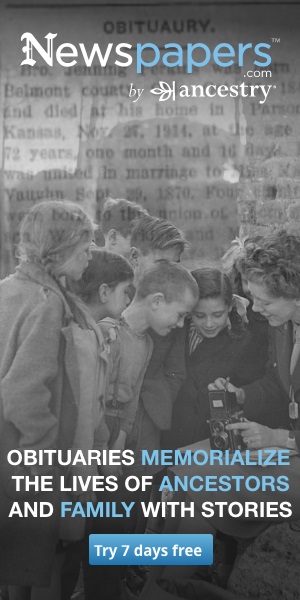Search Archived Marriage Records
Joan Barth
Joan Barth, editor at the School of Dentistry from 1979-85, died Dec. 23, 2005 at St. Joseph Mercy Hospital. He was 78.
In 1964, Leith and colleague Juris Upatnieks displayed a revolutionary laser transmission hologram of a toy train at the Optical Society Spring Conference. The technology caused such a buzz that people rushed from the room to see the hologram in a neighboring suite after the researchers presented the paper, Leith recalled for a 2003 Michigan Engineer article.
"Many of them thought it was done with mirrors," Leith told the Michigan Engineer. "A few wanted to know where the train was. I said, 'It's back in Ann Arbor.'"
When Leith, the Schlumberger Professor of Engineering, Electrical Engineering and Computer Science, and Upatnieks presented the work, the field was undeveloped. Between 1961-64 they presented a series of talks to the Optical Society of America outlining three major advances in holography that have made many of today's applications-from credit card security to the aerospace industry-possible.
Leith worked on a military radar program at the U-M Institute of Science and Technology at Willow Run, and rediscovered the principles of holography as a member of a group working to produce images with resolution comparable to aerial photography.
Leith's work in holography was similar to that of Nobel Prize winner Dennis Gabor, a Hungarian/British scientist who had a breakthrough in the area in 1947. Leith was unaware of Gabor's work, and told the Michigan Engineer he was "disappointed" but heartened that credible theory existed already to support his research.
Kim Winick, professor of electrical engineering and computer science, was a student of Leith's, and recalls a humble, yet brilliant, man with a long list of accomplishments, including graduating 41 doctoral students. Leith had two students studying with him when he born in Detroit and worked at the University for 52 years. He is survived by his wife, June, and daughters, Pam Wilder of San Jose, Calif., and Kim Leith of Baltimore; and three grandchildren.
Dr. Thomas Carli
Dr. Thomas Carli, a U-M psychiatrist who devoted his career to transforming the way mental and physical health care is delivered, died Feb. 11, 2006 at his home in Ann Arbor after a courageous battle with cancer. He was 63.
Sacks received his bachelor of science in chemistry from the University of Illinois at Urbana-Champaign in 1965, and his doctorate in analytical chemistry from the University of Wisconsin-Madison in 1969. He began his career as an assistant professor in Ann Arbor that same year and was promoted to associate professor in 1974 and full professor in 1979. He served the Chemistry Department as associate chair for graduate studies from 1987-92.
During his 37 years as a faculty member, Sacks taught both undergraduate and graduate students the principles of modern analytical chemistry and instrumentation and was a driving force in modernizing the analytical chemistry curriculum. He developed courses on chemical instrumentation at the undergraduate level and, at the graduate level, he introduced courses on electronic measurements and microcomputer control of analytical instruments, as well as modern separations methods.
He served as mentor to more than 35 doctoral graduate students who have gone on to distinguished careers in academia, industry and government laboratories.
Sacks was recognized internationally for his pioneering work on analytical instrumentation. During the early part of his career his research focused on novel atomic emission spectroscopic methods, including direct solid-sample elemental analysis. In the 1970s he developed exploding thin film platforms for solids analysis that combined simplicity of sample introduction with unprecedented low detection limits. In the mid-1980s, he turned his attention to innovative approaches to high-speed gas chromatographic separations of complex mixtures of volatile organic compounds. His methodologies reduced measurement times for complex mixtures almost 100-fold and attracted great academic and industrial interest, eventually leading to formation of a spin-off company, Chromatofast Inc.
In recent years he helped to lead efforts at the University to create wireless micro-analytical systems for environmental, homeland security and deep-space applications. During his career, Sacks and his colleagues published more than 150 research papers on these topics and presented their findings at scientific conferences all over the world.
Sacks is survived by his wife, Kristine, and daughter, Jenny.
A public memorial service will be held at 2 p.m. March 9 in the Vandenberg Room of the Michigan League. The Department of Chemistry has established the Richard D. Sacks Memorial Travel Award, which will be used to support yearly travel awards for analytical chemistry graduate students to present their research at technical conferences. For more information, call (734) 615-9852.-Submitted by Alice Forney, Department of Chemistry
Edwin McClendon
Edwin J. McClendon, professor emeritus of education and health education, Born in Troy, Okla., McClendon was part Choctaw Indian. During World War II, he served in the Navy and attained the rank of lieutenant. He moved to Detroit in 1955.
During his tenure at U-M from 1972 until his retirement in 1992, McClendon produced more than 50 monographs, articles and research reports, and he wrote or co-authored seven books, including "Healthful Living for Today and Tomorrow" (1978) and "Health and Wellness" (1987), a text widely used in high schools. He was chair of the Native American Studies sequence in American Culture and represented Native Americans on the University Minority Affairs Council. McClendon also served as a consultant to the WHO.
A resident of Plymouth, McClendon was a member and president of the Plymouth-Canton Board of Education for 14 years. In his honor, the school administrative center was renamed the E. J. McClendon Center in 1993.
He is survived by a son, Edwin Jr.; daughters, Melody Lang and Joy McClendon; and two brothers, four sisters and four grandchildren.-Submitted by Terri Mellow, SPH


